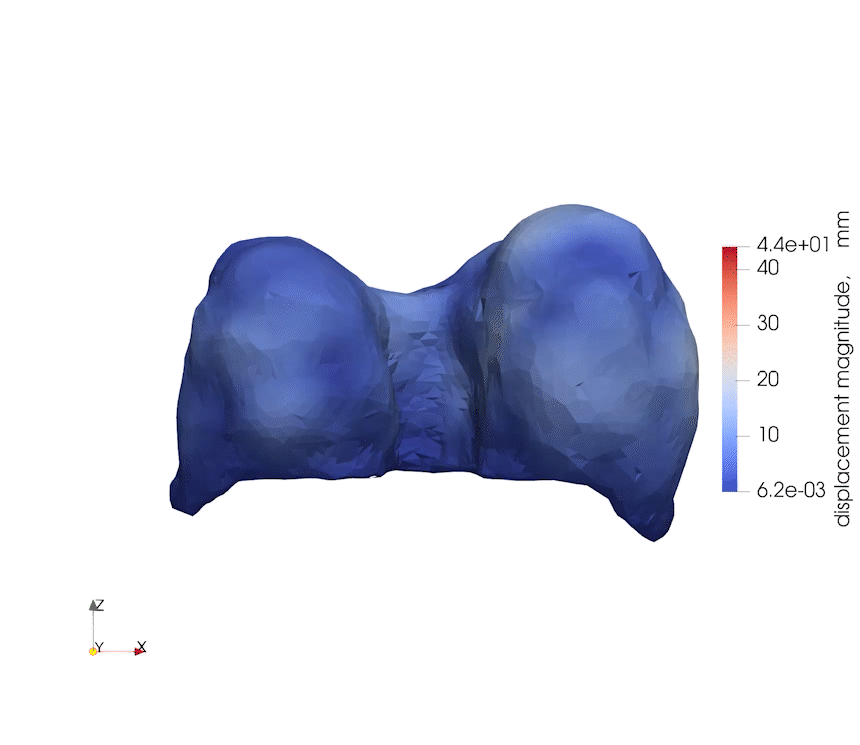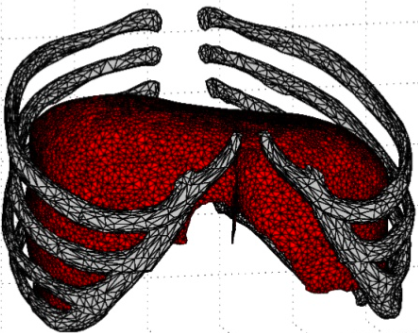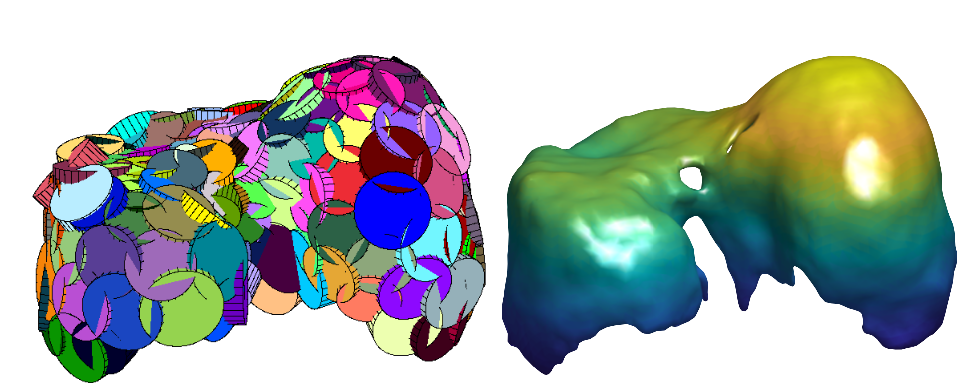
Context
This project centers on mechanical ventilation support within an intensive care setting. Specifically, it’s focused on creating an individualized “virtual ventilator” model to simulate and monitor diaphragm function in patients undergoing mechanical ventilation. A primary goal is to address ventilator-induced diaphragmatic dysfunction by developing a model of the diaphragm
Collaborations
This work is in collaborating with Elisabeth Larsson from Uppsala University, together with Nicola Cacciani from Karolinska Institute.
It is part of the project ![]() funded by the Swedish Research Council (Vetenskapsrådet, VR).
funded by the Swedish Research Council (Vetenskapsrådet, VR).
Results
We work on a novel meshless method for simulating the behavior of the human diaphragm, crucial for respiratory mechanics. We use radial basis functions (RBFs) to approximate spatial derivatives without relying on a predefined mesh. This approach simplifies modeling of large deformations and complex geometries typical of biological tissues. The diaphragm is modeled as a thin elastic shell with kinematic constraints to mimic physiological motion. The method handles boundary conditions effectively and adapts well to irregular geometries [1, 2]
We also used RBFs for geometry reconstruction and PDE solution in thin structures where thickness is much smaller than other dimensions. The technique supports both reconstruction from scattered data and numerical PDE solution.
 |
 |
 |



